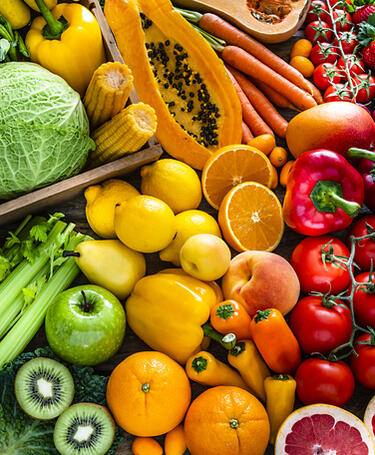
Guidance published to maintain confidence in food safety during Covid-19
Progress indicator

BRCGS, the organisation behind the Global Standard for Food Safety, has issued new guidance to food manufacturers amid concerns about the impact of Covid-19 on food production. Jon Murthy, Head of Global Marketing at BRCGS, reveals more.
Following concerns about the impact of Covid-19 on food production, BRCGS, the organisation behind the Global Standard for Food Safety, issued a new guidance paper in April entitled ‘Managing Food Safety during Covid-19’ to food manufacturers.
According to the World Health Organization it is highly unlikely that people can contract coronavirus from food or food packaging, but the pandemic presents a range of challenges to manufacturers, including disruption to supply chains, staff absenteeism, and an influx of new workers. All these have an impact on maintaining high standards of food safety and quality management.
Mark Proctor, CEO at BRCGS, said: “The global food supply chain has held up very well despite the huge spike in demand for groceries and the disruption caused by social distancing measures in the workplace. The purpose of this guidance is to provide additional assurance to brands and manufacturers, safeguarding them against potential operational challenges.”
The guidance sets out measures designed to mitigate a range of potential risks.
Managing Food Safety during Covid-19 spells out the steps manufacturers should take to maintain high standards of food safety and product integrity during the Covid-19 crisis. These include:
- Establishing a team with responsibility for the Covid-19 response;
- A systematic review of hazard analysis and critical control point (HACCP) processes;
- Systems for emergency supplier and raw material approval;
- The use of internal audits to maintain certification to food safety standards;
- Processes for approving temporary workers; and
- Additional housekeeping and hygiene measures.
The guidance sets out measures designed to mitigate a range of potential risks, including those posed by taking on temporary workers and by ingredient substitution.
It is likely that sites will be taking on more temporary workers to cover for increased rates of absenteeism or to cover additional shifts due to increased demand. This increases the demands for training and supervision to help workers adapt to the high standards of the food industry.
Shortages of raw materials may result in substitution, which could affect the label declaration. Product formulations may have to change, and this has implications for ingredient declaration and allergen information.
Included in the guidance is a 15-point checklist for food manufacturing sites:
- Establish a defined team to manage the Covid-19 response; appoint a team leader and deputies and ensure responsibilities are assigned clearly.
- Hold daily Covid-19 management meetings to update on progress, review issues, consider employee feedback, review incidents, report on absenteeism, review changes to Government advice, and consider new customer requirements.
- Ensure the Hazard analysis and critical control points (HACCP) manager is involved in any changes to pre-requisite plans to ensure food safety is not compromised.
- Hold employee briefings at least weekly either in person or via a newsletter.
- Regularly review with suppliers their stock situation, paying attention to the situation in the country of origin and commodity price movements.
- Where emergency suppliers of raw materials are established, check for existing certifications or audit reports and consider using online remote audits.
- When introducing new raw materials compile a full list of allergens present or considered likely to have cross contaminated during production; check also for potential impact on shelf-life and consider the impact on packaging claims and ingredient declaration.
- Where new raw materials or suppliers are being used, inspecting and testing procedures should be reviewed before first delivery and additional checks should be introduced, as necessary.
- Closely monitor raw material shortages and price changes to identify raw materials at risk; increase testing and inspection for raw materials identified to be at risk.
- Where there are large numbers of new/temporary staff ensure existing approved measures are maintained and increase signage to help newcomers understand the rules.
- If changes need to be made to labelling, introduce controls at the printer to separate new printed packaging from existing stock and other measures to ensure segregation of new and old stock through the supply chain.
- Where internal audits are normally provided through external consultants consider maintaining audits by using online interviews and document sharing.
- Review cleaning schedules, paying close attention to hard surfaces with the potential to transfer coronavirus; establish minimum acceptable times for cleaning; produce easy-to-understand guides for new staff and ensure close supervision.
- Carefully consider risks associated with suspending pest control inspections and discuss any planned changes with the pest contractor first.
- Where extending changing areas for staff at the beginning and end of each shift – for example by using vacant office space – ensure these measures do not compromise food safety, especially for high care or high-risk areas.
Proctor concluded: “In the coming weeks, we remain committed to continue to guide manufacturing sites to respond to the challenges presented by this crisis, and to support them through the recovery phase”.
Quality World

Get the latest news, interviews and features on quality in our industry leading magazine.